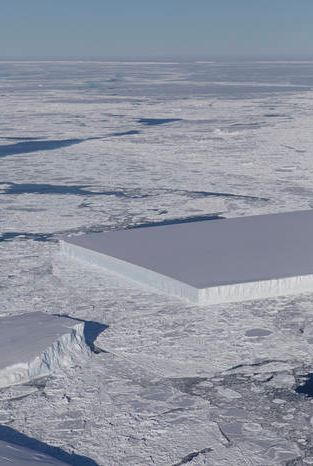The word “iceberg” likely conjures up an image of a big, jagged chunk of ice similar to the one in the movie “Titanic.” So an almost perfectly rectangular icy mass may seem unnatural. But it’s true. NASA scientists recently spotted an unusually symmetrical tabular iceberg.

NASA has been performing aerial surveys of polar ice over the past decade. The latest ice shelf, or large floating chunk of ice, to be monitored by NASA is Larsen C. In 2017 an iceberg the size of Delaware broke off. This estimated trillion-ton chunk of ice is largest ever recorded. During a recent Operation IceBridge mission to survey the ice shelf in northern Antarctica, NASA scientist Jeremy Harbeck spotted an unusual tabular iceberg. So he snapped a picture.

Harbeck didn’t intend to take this photo, or see this sharp-angled iceberg. The mission was to assess the ice height and ice shelves in this area. Harbeck later said that he had never seen a tabular iceberg with four corners so close to 90°. This iceberg looked more like a floating sheet cake. It is estimated to be 130 feet tall.

There are four major types of icebergs. A tabular iceberg has highly angular edges and a flat top. Most Antarctic icebergs are formed by breaking off an ice shelf, and are typically tabular. While this “viral” iceberg looks perfectly rectangular now, the edges will be rounded out by the wind and waves.

